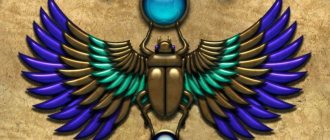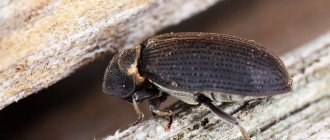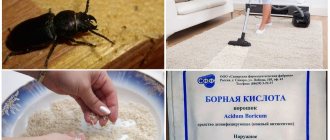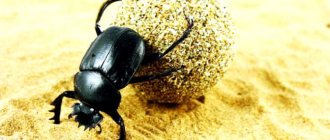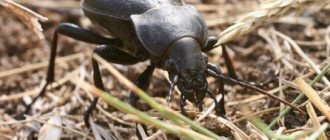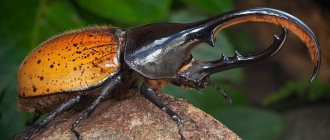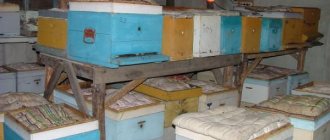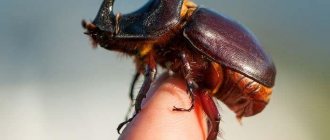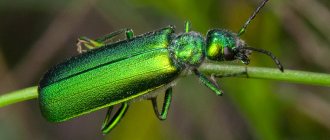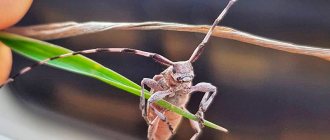Dung beetles love manure. The Egyptians believed that scarabs rolled the sun across the sky. Humans invented wheeled motion in 3500 BC, and shrew beetles used this technology to move dung pellets 50 million years before the pyramids.
The easiest way to move something is to roll it into a ball. Manure is sticky, so when it rolls, it picks up even more manure particles. It's like creating the parts of a snowman.
Why manure and how do manure piles differ?
It's a fascinating sight, a tiny beetle pushing a huge ball of dung. Dung beetles roll balls of dung, hence their name. They extract nutrients and energy from feces. They like dung from herbivores as it is full of nutrients. In contrast, carnivore dung has little nutritional value. But the best manure is produced by omnivores, which eat plants and animals.
Dung beetles prefer the most “fragrant” dung, including chimpanzee and human feces.
Benefits for the environment
The dung beetle rolls waste balls for a reason. It moves excrement, helping to clean the area. By burying manure, beetles fertilize the soil. Dung beetles also help disperse plant seeds over long distances.
Ball rolling
Scientists have proven the invaluable contribution of burrowing beetles to the well-being of ecosystems associated with industrial cattle breeding.
Interesting fact! In the 60s of the 20th century, Australian authorities became concerned with the problem of disposing of manure that remained in fields and meadows as animal waste. Evolutionarily endemic species (inhabiting a certain territory) could only process solid feces of local marsupial inhabitants. Dung beetles were brought to Australia from other countries, the digestion of which was adapted to the processing of cow “pats”. Literally within a season, the dung beetles coped with the task.
Reducing the amount of manure reduces the number of flies that carry infections dangerous to livestock. By processing animal excrement, dung beetles reduce the emission of methane and greenhouse gases into the atmosphere by 40%.
The tunnel holes dug by dung beetles enrich the soil with oxygen.
Types of dung beetles
Rolling
This is the most iconic group of beetles, they actually roll dung into balls and are incredibly picky about where they live and lay their eggs, traveling up to 200m before burying the ball in the ground.
Shrews
These dung beetles don't run around with a pile of dung that's 10 times their weight. Instead, they form a ball and bury the dung where they find it.
Sedentary
The third group simply digs into the manure, wherever it lies. There are dung beetles that do not eat droppings, preferring decaying fruits, rotting plants or mushrooms that grow from dung.
Only 10% of beetles roll dung balls. The majority of beetle species make balls and leave them where they found feces.
Lifestyle and features
Let's figure out why a beetle needs a dung ball. Manure is vital for insects:
- for nutrition: these creatures feed on semi-decomposed plant debris contained in excrement, therefore they prefer the waste of herbivores and omnivores;
- for reproduction.
With its front legs, the insect makes a small pellet of feces, climbs onto it and begins to “dance” so that the manure compacts and takes the shape of a ball. A ball - coprolite - dung beetles can bury:
- in the same place where it was formed;
- roll back to your hole and feed until the next outing;
- do not bury it at all, but eat it on the spot.
Interesting fact! In one night, the beetle is capable of moving manure that weighs 250 times its own.
In the heat of the day, dung beetles prefer not to stick their heads out of the tunnels. They live alone except for the mating period. They are distinguished by their aggressive disposition - whole battles can unfold for the right to own the ball.
During flight, the beetle's hard wing covers emit a characteristic hum and notify of its approach. In particular, this helps to repel insect enemies.
In flight
Interesting fact! Scientists have discovered that dung beetles use coprolite as a conditioner. During the journey, the beetle periodically stops and climbs onto its ball. He's not just resting. The moisture that evaporates from the depths of the ball helps the insect cool its body in the heat.
Appearance of a dung beetle
Arthropods live up to 3 years in nature. They vary in size, ranging from tiny microscopic insects to large 5cm beetles that roll dung across African deserts.
All species of dung beetle have dark bodies covered with a protective shell that protects them from falls and scratches, but not from predators. Dung beetles, like most other arthropods, walk remarkably well on the ground, but they also have wings. When a dung beetle is threatened, it spreads its wings and flies away.
Natural enemies
Insects that feed on excrement emit a disgusting odor that repels almost anyone who might eat the bugs. Domestic chickens, crows, and omnivorous hedgehogs do not disdain dung beetles. Young, inexperienced foxes may try to eat the dung beetle due to lack of food. To scare away potential enemies, the beetle makes disgusting creaking sounds by rubbing its abdomen and elytra, and also pretends to be dead.
The body of a dung beetle can be parasitized by a special tiny mite, Gamasuscoleoptratorum, which, with its sharp jaws, bites through the insect’s hard shell and attaches itself. One dung beetle can be the host of several mites at once.
Six-legged vacuum cleaners
In the Pentateuch, the Lord commands the Jews who set out on a campaign: “Besides your weapon, you must have a spatula; and when you sit outside the camp, dig a hole with it and cover your excrement with it again.” Dung beetles perform this sanitary and hygienic procedure for the rest of the animal world, not only removing excrement from the surface of the earth, but also enriching the soil horizon with it. In temperate latitudes, as I already said, dung beetles are not immediately on the scene, but in hotter climates their efficiency would be the envy of cleaning companies. In sunny Provence, the French entomologist and writer Jean Henri Fabre clearly experienced this more than once: “If you decide to leave the company and retire to the bushes for your own needs, then as soon as you get up and begin to straighten your dress, when suddenly - Fru! - here one, three, ten beetles immediately appear and rush to the gift you left behind” (“Instinct and customs of insects”, M.: Terra, 1993. Vol. 2, p. 19). In the Kruger National Park (South Africa), scientists once calculated that 17,000 dung beetles flocked to a two-kilogram pile of elephant dung in a short time, completely eliminating it in two hours. By comparison, in California, manure cakes treated with insecticides take four years to decompose...
Genus classification
The family Geotrupidae includes more than 600 species of dung beetles. In this case, you should pay attention to several subfamilies, such as:
- The subfamily Bolboceratidae, which includes both large and medium-sized beetles. Most species of this subfamily live in the Palearctic. Beetles of this genus grow in length up to 15-23 mm, their antennae consist of 11 segments, and the club consists of 3 segments. Beetles are distinguished by black, brown or two-colored elytra. The wings are well developed, so the beetles fly from one place to another without any problems. Adult beetles prefer to feed on mushrooms, and larvae prefer to feed on humus.
- The subfamily Geotrupinae are beetles that grow to a medium size and are distinguished by their prominent upper jaws and lip. The club can be lamellar or enveloping. The forelimbs have from 4 to 9 teeth, which are located along the outer edge. Beetles of this subfamily feed on the excrement of mammals. In addition, their diet includes mushrooms and forest litter.
- The subfamily Lethrinae is distinguished by a convex body, oval in shape, up to 35 mm long. They can be distinguished from representatives of other families by the presence of mandible appendages located on the upper jaw of males. The mace is enveloping, so it cannot open in the form of a fan. Representatives of this subfamily do not fly and prefer to live in burrows. During the breeding season, males show aggression towards each other. Males and females mate on the surface. In order to have something for the larvae to eat, the beetles prepare various organic matter.
Origin of the species and description
Photo: Dung beetle
Dung beetles evolved at least 65 million years ago as dinosaurs declined and mammals (and their droppings) grew larger. There are about 6,000 species worldwide, concentrated in the tropics, where they feed primarily on the dung of terrestrial vertebrates.
Methods for controlling dung beetles
Most people get rid of bugs because they are afraid of insects. This lamellar is not harmful to people.
You can use hanging bait :
- For this you need a 2 liter bottle.
- The neck of the container is cut off.
- Holes are created around the perimeter to stretch a strong rope on which there will be a trap.
- Manure is laid out at the bottom.
Also a good effect from a sticky trap . Manure is placed in any vessel with a large diameter. Solid oil is applied around, to which dung beetles stick.
As a folk remedy, you can use a decoction of onion peels . For preparation:
- Take 1 kg of onion peel and a bucket of water.
- The husk is poured with boiling water.
- Leave for 7 days closed.
- Next, filter.
- Add more water in a 1:1 ratio.
- Spray the habitats of the dung beetle.
Battle for manure
Nature pacifies us, instills a feeling of peace and harmony. But appearances are deceiving - in any tiny clearing, in a pond or in the branches of trees, a fierce struggle for existence rages, battles unfold at every step, which we pass by without noticing them. Here the bindweed strangles the nettle, here the dragonfly drives its rival out of its hunting grounds, and here the mouse destroys the bumblebee’s nest. In nature, even a pile of excrement becomes a reason for fierce competition. Before this pile has time to cool down, a flock of gray flies with black longitudinal stripes on their chests flocks to it from nowhere. These are sarcophagid flies (Sarcophagidae). Running back and forth through the pile of excrement, they freeze every now and then, leaving behind larvae - small white worms, which immediately begin to burrow into the fetid mass. Unlike most insects, sarcophagid flies are viviparous, that is, their eggs develop inside the mother’s body and a larva is born, which immediately begins to develop the scarce resource. There are a lot of people who want to feast on manure - why then waste precious time on development in an egg, when you can immediately start feeding, thereby getting ahead of your competitors?
Compared to nosy flies, dung beetles seem like clumsy hulks. They do not arrive at the scene of events immediately. It may take several hours for the first geotrupidae, which looks like a metal brooch, to appear next to the excrement. Instead of operating in swoops like light fly cavalry, he deploys methodical trench warfare for dung. The geotrupe's sapper shovels are widened and jagged shins - he uses them to dig an underground passage-tunnel right under the heap, in which he stores part of the precious substance for posterity. Such dung beetles are called tunnellers. In addition to them, there are also adherents of two other strategies: dwellers and rollers. Dwellers (from the English dwell - to inhabit) simply bury themselves in manure and lay eggs there, without caring in any way about reserving a separate portion of manure provisions for future larvae. But rollers (from the English roll - to roll), on the contrary, in terms of parental care they can give odds to most insects. Who has not heard of the sacred Egyptian scarabs, which fashion a ball out of dung and roll it in front of them? These are typical roller dung beetles. A ball of dung, hidden away from competitors and buried in the ground, is real maternal capital, reliably ensuring the future of the larva. Feeding under the protection of the hardened shell of this ball, the larva grows and pupates, turning into an adult beetle.
The dung beetle larva, biting into the fecal gift that its parents prepared for it, passes everything through itself indiscriminately: undigested plant fibers, fragments of seeds and other entrails. An adult beetle is much more picky - it uses only the liquid fraction of fresh manure, filtering out nutrient particles from it. Our imagination is struck by a thirty-meter blue whale the size of two tourist buses, which filters small crustaceans the length of half a little finger (the so-called krill) from the water. But dung beetles are just as surprising. The five-centimeter scaraboid Helicopris japetus swallows dung granules with a maximum diameter of 60 microns, and for smaller dung beetles this value is even smaller. With an increase in body weight by 100 times, the maximum size of consumed particles in dung beetles increases only three times, so if a scarab weighed a hundredweight, like a heavyweight boxer, it would feed on crumbs up to 1.2 mm in diameter! In fact, adult dung beetles are real fecal whales. The role of whalebone is played by thick brushes of hairs on the mouth parts. They retain large inedible debris and allow only small suspended matter to pass through, which settles between the mandibles (jaws). In all other beetles, the mandibles are used for biting off pieces of food, while in dung beetles they have turned into filtering organs covered with numerous pores and tubules. When the dung beetle clenches its jaws, the excess water contained in the filtered excrement is squeezed out, leaving only a homogeneous, delicate substance similar to a paste or puree inside.
But why all these tricks? Dung beetles, like their ancestors, scaraboid saprophagous beetles*, extract proteins and other nutrients not from the dead organic matter itself, but from the fungi and bacteria that decompose it. In that chewed pulp that has passed through the animal’s intestines, which are filled with microflora, there are especially many bacteria. For example, human excrement consists of 75% water, and the rest is solid organic mass, the main part of which (from 25 to 50%) is bacteria. In the manure of herbivores, due to the abundance of undigested cellulose, the specific gravity of bacteria in the solid fraction of excrement is slightly less, but still very significant (about 15-20%). Since bacteria are concentrated on the surface of organic matter, it is more profitable for beetles to fill their bellies with many small particles, whose total surface area is larger than that of several large pieces of the same volume. Thus, filtration helps dung beetles selectively consume the most nutritious, nitrogen-rich part of the excrement.
Fossil dung balls from Cenozoic deposits of Patagonia (Argentina), belonging to the ichnotaxon Coprinisphaera. On the cut in the area of the “neck” you can see a small egg chamber. Photo by Victoria Sanchez (Argentine Museum of Natural Sciences)
Talisman as a gift
The sacred scarab is well suited as a gift to loved ones and relatives. Most often they choose figurines or paintings depicting a beetle. Female relatives can choose a piece of jewelry, and male relatives can choose a ring with a carved scarab. When choosing a gift, you need to be mentally inclined only to the good. When presenting a gift, you need to tell the new owner about the meaning of this sign and the rules for its use.
A talisman obtained in this way can serve no worse than one purchased independently. Of course, in this case, the donor must choose an amulet, knowing in advance who and for what it will be used.
You cannot accept a gift in the form of an Egyptian talisman from strangers or people you barely know - it is unknown with what thoughts the person is presenting it.
Everyone knows such a symbol as the scarab beetle - a talisman originally from Egypt, where it is given great importance. Jewelry and decorative items with scarabs are offered to tourists in local markets. From this article you will learn what such souvenirs carry.
What types of scarab beetles are found in Europe and the CIS countries
The habitat of scarabs covers the southern part of Europe and the countries of Central Asia. The species diversity in this area includes about 20 species. On the territory of Russia, only a few species of beetles from the genus Scarabs are usually found. The most common and well-known among them are:
- sacred scarab;
- Typhon scarab;
- Scarab Sisyphus.
Interesting facts from the life of dung beetles
- It is believed that the dung beetle is able to navigate by the stars and the sun. When they move a load, they usually move backwards to forwards, pushing the rolled ball of manure with their hind legs. At the same time, they never lose direction of movement. To determine the way to their burrow, they often climb to higher ground. If they have to move in the dark, they navigate by the moon and the stars. When it’s cloudy outside, they lose a little more time getting to their home.
- The sacred scarab is a type of dung beetle. Even in ancient Egypt, they noticed that a black shiny beetle rolls balls of dung. The Egyptians believed that the beetle followed the movements of the sun in the sky.
- Dung beetles are quite interesting creatures because they have learned to get moisture from fog. To do this, they open their wings, after which droplets of life-giving moisture appear on them.
Only one conclusion suggests itself - these beetles bring only benefits.
Sacred Scarab. Forms of nature: ball.
Life cycle
Spring dung beetles reproduce in summer. The beetles dig a special chamber at the very bottom of the hole, into which they roll dung balls, into each of which the female then lays one egg. At this time, the male and female live together, seal the entrance to the burrow with a dung ball and wait for the larvae to appear. Embryonic development of eggs lasts from 20 to 28 days. The hatched larvae feed on the reserves of the contents of the ball in which the egg was located. As they grow, they molt several times. After overwintering, by spring the larva pupates, and soon new beetles emerge to the surface. One generation develops over the course of a year.
The role of scarab beetles in history
This genus of beetles has won deep respect from people since ancient times, and the inhabitants of ancient Egypt considered it a divine creation. The Egyptians identified the rolling of dung by these beetles with the movement of the sun across the sky, because as you know, scarabs always roll their balls from east to west . In addition, people are accustomed to the fact that in desert areas all living creatures strive for water, while scarabs, on the contrary, feel great in lifeless deserts.
Khepri is a man with a scarab face.
The ancient Egyptians even had a god of dawn and rebirth named Khepri, who was depicted as a scarab beetle or a man with an insect instead of a face.
The Egyptians believed that the scarab god protected them both in the world of the living and in the world of the dead. For this reason, during mummification, a scarab figurine was placed inside the body of the dead in place of the heart. In addition, beetles of this species were often depicted on various talismans, boxes and precious items.
Jewelry featuring the scarab remains popular to this day.
Hand collecting Colorado potato beetle in a plastic bottle
The benefits of plastic bottles for summer residents have long been appreciated and have been repeatedly translated from ideas into reality: a windmill for moles, a washbasin, a fence for a flower bed, drip irrigation - this is a modest (but far from complete) list of what immediately comes to mind. And with regard to collecting Colorado beetles, everything is even simpler. In the old “old-fashioned” way, pests are collected individually into an open plastic bottle, then tightly screwed with a cap and sent to the trash container. The fate of the potato leaf beetle has been decided. If you don’t have a plastic bottle at hand, you can collect pests in any hermetically sealed container, which you won’t be sorry to throw away later.
The Colorado potato beetle has become such a common sight in gardens in different countries that in some places they even erect monuments to it. For example, at the end of the last century, one of them was opened in Hungary on the occasion of the “round anniversary” since the appearance of the pest in this country.
Modern meaning of the talisman
Now they believe that the image of an insect helps in the afterlife and earthly life. Such amulets protect against evil spirits, negative energy, energy vampirism and other misfortunes. They help with business, creating a family, harmonizing a couple’s relationship and helping them find love.
Such a souvenir from the country of feasts will make the owner confident and harmonize energy. It brings incredible luck in literally everything, the desire to work for your own benefit, destroys laziness and helps you achieve prosperity and success. But he won’t do anything for you, he will teach you wisdom and give you the ability to see the true nature of everything that happens to you.
For women, the scarab brings youth and beauty, internal magnetism and charm. Men are endowed with perseverance and consistency. But the influence of the amulet does not depend on gender. When you lack luck in business, luck in finding a suitable partner, or motivation to work on yourself, turn to the amulet. It also has a positive effect on sexuality, increases libido, and relieves impotence and infertility.
Ladybug
In nature, it is not difficult to recognize this insect. Even the smallest child is friends with the ladybug. Probably each of us said:
“Ladybug, Fly to the sky, There your children eat candy, they give it to everyone, but they don’t give it to you.”
It turns out that the ladybug is not so harmless. She is a predator, feeding on aphids, crickets, spiders and other insects that harm plants. This type of beetle brings great benefits to our nature.
Interesting facts about ladybugs
- The French believed that the ladybug protected against misfortune; they wore talismans with a design of this insect.
- In the Czech Republic, it was believed that a ladybug promises good luck.
- During flight, a ladybug makes up to 85 wing beats per second.
- During its life, this bug lays up to 2000 eggs, and some of them are both fertilized and not. Unfertilized “empty” eggs serve as food for the young.
- Ladybugs overwinter, gathering in large colonies under stumps, stones, in tree crevices...
Where does it live?
Most of us are sure that the insect’s habitat is quite limited. But this opinion is wrong; the dung-ball-rolling insect is found not only in Africa. The peddler beetle, or beetle, is common north of the Himalayas in Europe and Asia. In the Eastern Hemisphere, it failed to take root only in Australia. The Western Hemisphere did not become a home for him at all.
Due to the large accumulation of manure, insects are periodically imported to other continents; they cope with the problem, but they fail to take root either in Australia or on the American continent.
Nutrition
The diet of this insect is not so varied. What does the dung beetle eat ? The main dish on the daily menu is manure, which gives this beetle its unattractive name. His sense of smell is very developed. With its antennae, like “satellite dishes,” it detects a food source and rushes there at full speed to get ahead of its competitors.
Dung beetle larvae feed on carrion or dung. Their parents provide them with all the food. Adults dilute their monotonous diet with mushrooms and carrion. There are certain species that are capable of not eating throughout their entire lives.
Prevalence
Hercules belongs to the lamellar family, the genus Duplyaki. These are the largest representatives of the genus (in general, their number is about 300), which “bear” outgrowths on themselves. The beetle's closest relatives are the rhinoceros beetle, the elephant beetle, and the scarab.
Hercules is native to South America. He also lives in Bolivia, Venezuela, the Caribbean, Ecuador, Peru, Central American regions, Dominican Republic, Mexico, Bolivia, Antilles, Colombia, Brazil, Panama, Guadeloupe. Favorite places are moist forests of subtropical and tropical zones, where a lot of greenery and fruit grow. But sometimes during wet periods they can be found in lowland and mountain forests. They prefer to live on the forest floor. Larvae live in rotting wood, which also serves as food, while adults prefer to live at the base of trees.
How do beetles reproduce?
After transitioning to the beetle stage, the insect prepares balls only for its food. Later the male joins the female. A pair is formed. Insects work together to form reserves that are transported to storage.
The depth of the burrow reaches 30 cm. The number of nests directly depends on the planned number of eggs. After the final formation of the shelter, the male leaves, having previously fertilized the female. The insect makes oval shapes from dung. This will be the home for the larvae.
The number of figures directly depends on the number of eggs laid. The female places each ball in a hole.
Transformation into a larva occurs after 11 days. The insect feeds on food prepared by the female. After a month, pupation occurs. Insects come out in the spring.
Beetles lay eggs in burrows
